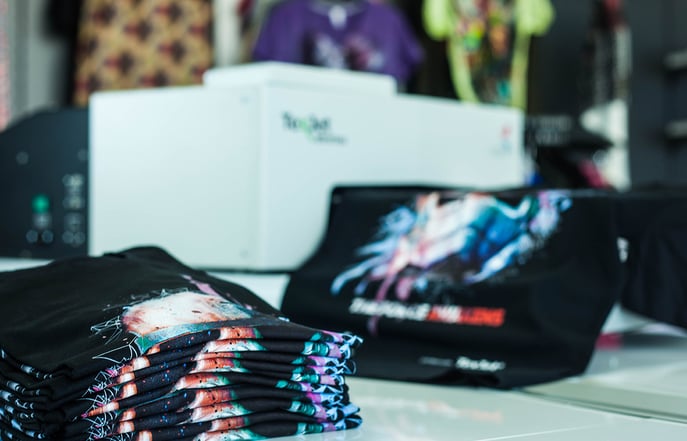Learn how to properly prepare your pretreated garments for an extended shelf-life. The correct pretreating procedure and storage conditions for fabrics destined for DTG printing.
A lot of DTG users prefer to pretreat in advance and have a stock of ready-to-print fabrics, due to their large production or in order to save valuable time. Depending on the pretreatment liquid used, the process, and most importantly the storage conditions, different printing outcomes will be observed over time.
When a garment that is precoated is stored for a certain period of time, it may eventually lose its printability. This happens because the pretreatment solution that has been applied beforehand to the fabric is no longer “active” and therefore it’s no longer effective. By using such a garment, you will get faded prints and they may also peel off during the wash.

Polyprint’s pretreatment solutions have been thoroughly tested to know in advance how long they can keep their printing properties and respectively their “shelf-life” on the garment. This way, the user can pretreat in bulk, without wasting garments and meanwhile receive the superior quality he wants.
Pretreating garments
The pretreating process is known and remains the same, as in the case of spraying a garment and printing it right away. That being said, it is really important to make sure that your pretreating process is on point, otherwise you may end-up with a lot of fabric waste. To avoid this, keep the following notes under consideration:
- Ensure that your pretreatment liquids are within the expiration date and will remain active until you use the pretreated fabric. For example, if your pretreatment liquid expires in two months, you should use the pretreated garment in that time frame.
- Shake the pretreatment bottles very well, in order to achieve a homogenous liquid that will provide accurate results.
- Opt for an automatic pretreatment machine that will deliver consistent results – eliminating user errors and help with productivity, especially when you want to pretreat large orders. If you are using a spraying gun, you should be careful and focused during the pretreating process. Follow our guide for a manual pretreating process.
- Fixate the pretreated fabric with high pressure, so all the fibers can be even and create a smooth printing surface.
Storing pretreated garments
Moving on, it’s important to know how to properly store pretreated fabrics. Right after fixating the pretreatment liquid, you should store the fabrics in air-tight bags, so they won’t be exposed to humidity. If you are working in an extra humid environment or you are equipped with a humidifier, it is better to store your garments in a separate room. If the pretreated fabrics absorb humidity, even after pressing them prior to printing, there is a high chance that your end result will not be what you expect.
Learn about the importance of humidity & temperature on the workspace.
Printing on previously pretreated garments
When it is time to print, it is vital to press the garment for 5 to 10 secs prior to printing, in order to let the humidity out and flatten out the fabric’s fibers.
Shelf-life of pretreated fabrics
Polyprint pretreatment liquids, the Texjet Inks - Pretreatment for Darks and Pretreatment for Lights, can stay active for at least 6 months coated on a fabric. That means that you can pretreat the fabrics in advance and print them 6 months later, given that the process was executed correctly.
Caution: If you have a coated fabric that exceeded the suggested timeline and you are thinking about applying one more pretreatment layer on top of the old one, we strongly advise against this tactic. Even though it may be look at first sight properly printed, the moment you wash it, the print is more likely to crack and peel off.
-1.png?height=120&name=Polyprint%20Logo%20(Dark)-1.png)